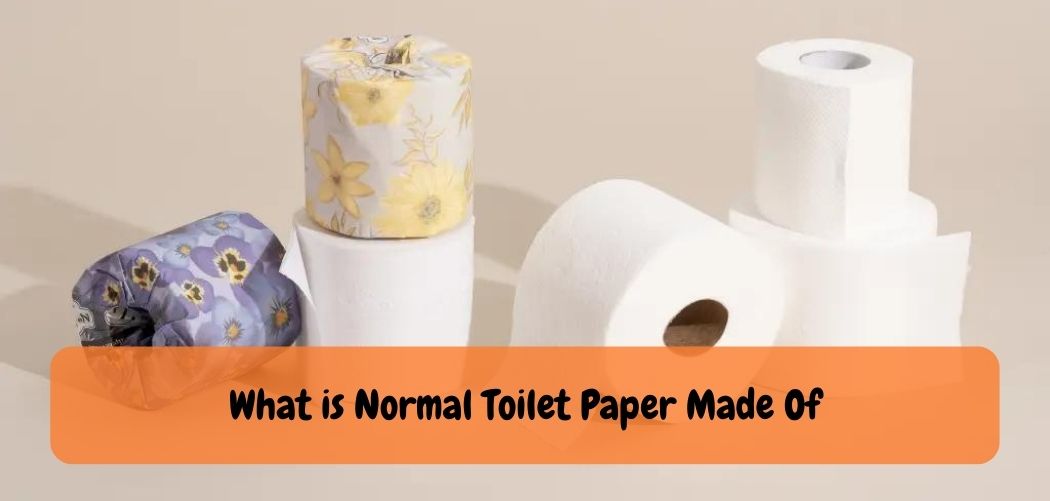Toilet paper, a ubiquitous household item that we often take for granted, plays a vital role in our daily lives. We use it for personal hygiene, cleaning, and maintaining a level of comfort and cleanliness.
Yet, have you ever wondere what this essential product is of? The seemingly simple answer is paper, but the manufacturing process and materials involved in creating toilet paper are more intricate than one might expect.
In this article, we delve into the fascinating world of toilet paper production and explore the various materials used to make this everyday necessity.
From the early days of toilet paper to the innovations of today, let us unravel the composition of what we commonly refer to as “normal” toilet paper.
The Guide: What is Normal Toilet Paper Made Of
Toilet paper is a ubiquitous household item that we rely on for personal hygiene and cleanliness. Although it may seem like a simple product, the materials use in manufacturing normal toilet paper are carefully chosen to provide both strength and softness. In this informative guide, we will explore the various components that make up normal toilet paper and how they contribute to its functionality and comfort.
1. Pulp:
The primary ingredient in normal toilet paper is pulp, which comes from different sources. The two main types of pulp used are virgin pulp and recycled pulp. Virgin pulp is directly from wood fibers, typically source from trees like spruce, pine, or fir. Recycled pulp, on the other hand, is derive from recycle paper products, such as newspapers, magazines, or office paper. The choice between virgin and recycled pulp often depends on factors like cost, environmental considerations, and desired product characteristics.
2. Bleaching Agents:
Toilet paper is usually bright white in color, and this is achieve through the use of bleaching agents. Chlorine-based bleaching agents were once commonly used, but their environmental impact has led to the adoption of more eco-friendly alternatives. Today, elemental chlorine-free (ECF) or totally chlorine-free (TCF) bleaching processes are employe, minimizing the release of harmful chemicals into the environment.
3. Softening Agents:
To enhance the comfort and texture of toilet paper, manufacturers often add softening agents. These can include substances like natural oils, lotions, or emollients, which help to make the paper smoother and more gentle on the skin. Softening agents also contribute to the overall strength and flexibility of the toilet paper.
4. Water and Chemicals:
The process of transforming pulp into toilet paper involves a combination of water and various chemicals. These chemicals aid in the breakdown of the pulp fibers, helping to create a more uniform and absorbent paper. Additionally, they can assist in improving the paper’s strength, durability, and resistance to tearing.
5. Additives and Fragrances:
Some toilet paper brands incorporate additional additives or fragrances to enhance the overall user experience. These can include ingredients like aloe vera, chamomile, or lavender, which provide a pleasant scent or added soothing properties. It’s important to note that these additives are optional and not present in all types of normal toilet paper.
What is Toilet Paper Made Out Of?

Toilet paper is one of those essential househol items that use every day, but many of us may not know what it’s actually out of. Toilet paper is typically from a combination of wood pulp and recycled material, like sawdust or old newspapers.
The materials are groun up into small fibers and then combine with water to form a thick slurry before being presse through rollers to the finishe product.
The process can also include bleaching agents, wet strength agents, anti-static spraying and other chemicals for added functionality. Once the toilet paper has been presse together in rolls, they cut down to size and package for sale at stores aroun the world.
In addition to traditional toilet paper rolls, some manufacturers now offer eco-friendly versions made largely from bamboo or sugarcane which are much more sustainable than their plastic counterparts!
Also Read: Can Toilet Paper Cause Urinary Tract Infection?
Does White Toilet Paper Have Bleach in It?

No, white toilet paper does not have bleach in it. Toilet paper is from a variety of materials including recycled paper, wood pulp and even bamboo fibers. The color of the toilet paper may depen on what material was use to make it.
While some manufacturers do use chlorine or other bleaching agents during the manufacturing process, these are usually remove before the finishe product is available for sale.
In fact, many people prefer unbleached recycled tissue products as they believe that they cause less environmental damage than bleached products.
Additionally, there are many natural brands of toilet paper that are free from any kind of chemical additives or bleaching processes.
So while you may see brighter-colored tissues at the grocery store, rest assured knowing that those won’t necessarily contain any form of bleach!
What is Normal Toilet Paper Use?

It goes without saying that toilet paper is a necessity in modern life. But how much “normal” toilet paper use is too much? Well, it depends on the individual and their habits.
Generally speaking, most people will go through one or two rolls per month but this can vary significantly depending on the size of your household and any special needs you may have. For example, if you’re potty-training a toddler they might require more than an adult would!
When it comes to finding out what is considere normal toilet paper use for your situation, try to keep track of how much you are using each week and adjust accordingly.
Additionally, consider investing in larger packs of bulk rolls as these usually come with discounts which can help save money over time. Finally, be sure to practice sustainability by recycling used cardboard cores from empty rolls when possible and opting for recycled products whenever feasible.
What Did They Do Before Toilet Paper?
Conclusion
The unassuming roll of toilet paper that we rely on every day is not as ordinary as it may seem. From its humble origins as a luxury item to the widespread availability we enjoy today, toilet paper has evolved alongside human needs and advancements in technology.
The materials used in its production have also changed over time, from recycled paper to sustainably sourced fibers, reflecting our growing awareness of environmental concerns. As we flush away our used toilet paper, it’s worth appreciating the ingenuity and resourcefulness that goes into its creation.
Next time you reach for a roll of toilet paper, take a moment to reflect on the craftsmanship and innovation involved in its manufacturing process. From the carefully selected fibers to the precise techniques used in creating those soft, absorbent sheets, each roll represents the collective efforts of countless individuals working to provide us with a clean and hygienic experience.
So, the next time you find yourself pondering the composition of your toilet paper, remember that it’s not just paper—it’s a testament to human ingenuity and a symbol of our commitment to comfort and cleanliness.

